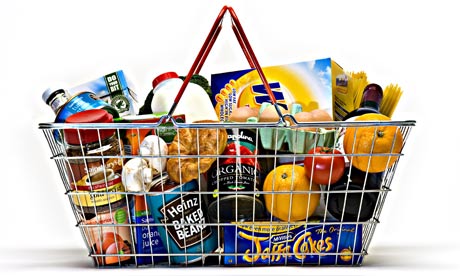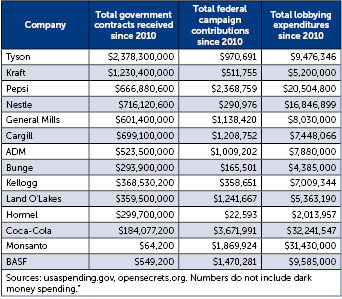Concussions in the NFL are a major problem. It is pretty hard to find a player in the league who goes their entire career without ever having one. Excessive head trauma can lead to a condition called Chronic traumatic encephalopathy (CTE). This condition causes many health issues that can make former players’ lives miserable. A major problem with CTE is that it increases the suicide rate by over 30%. While repeated concussions can ruin a player’s life, should the NFL do anything to stop them?
Research on the human brain for damage caused by playing football only started recently. When it was first discovered, it was not widely accepted. In fact, ESPN states that the NFL only recently came out and accepted that playing football and having CTE are related. According to the Boston University CTE center, one of their first studies came out and revealed that 87 of 91 former NFL players had CTE. While this number is scary, there are certain things that should be noted. To start of, since this was one of the first studies, the only brains that had to test were those of players who had donated them. Players would’ve only donated their brain if they thought something was wrong.
Secondly, since these are former football players, it can be assumed that they played quite a while ago. So while there is a direct correlation between football and CTE, equipment was different and not as safe as it is today. If the study was done on players today, which is not possible, the numbers would most likely be lower.
So what’s the danger in CTE? What makes it such a problem?
CTE has many symptoms. Many of them would be expected from traumatic brain injuries such as memory loss or confusion. The problem is there are many others such as depression, anxiety, suicidality, parkinsonism, and dementia. Yes, players are more likely to kill themselves because they had repeated concussions. Many players cannot enjoy their lives after football because they are too anxious and can’t think correctly. Many players have even confessed to not remembering their children’s names at times. As if all this wasn’t bad enough, then there are all the secondary problems. When people get anxious and depressed they tend to resort to drugs and alcohol which created a whole new set of problems. Nate Jackson and Thurman Thomas two former players who experience these symptoms everyday.
Former Buffalo Bills running back Thurman Thomas recently spoke about the effects of his concussions while playing in the NFL. He spoke at a concussion awareness event. Thomas spoke about how he has mood swings and “On so many days, I have to apologize to my family for them”. As he was speaking to the crowd, he had to stop several times because he couldn’t focus and forgot what he was talking about. Thomas also spoke about how he carries a notebook around everywhere he goes that describes what he is doing, just in case he gets lost or forgets. These are clear sign of brain damage after a 13 year NFL career.
Nate Jackson played in the NFL from 2003-2008. He had multiple concussions and often times played through them without telling team doctors. He says this is necessary because if you start missing time, you will be cut from the team. Now retired, he talked to Sports Illustrated about the impact the concussion had on him. He says “I am sad and I am depressed and suicidal thoughts, like raindrops, come down from the sky on seemingly sunny afternoons.” He then says that after doing it all and seeing the effects, if the NFL were to call him and he were able to get a job playing football, he’d do it again.
Yes, he’d do it again!!
Why would players put themselves in harms way even though they know the danger? Well the way Nate Jackson explains it, many players have no other skills, therefore football is all they have. Therefore, the NFL has to do a better job protecting the players. But at what costs? Should the game change? Should it just be better equipment? What has to be done?
The game of football, especially the professional game in the NFL, is a brutal game. You have muscular men that weigh more than 200 pounds in many cases running full speed into each other with the intention of hitting as hard as possible. It is only natural that injuries are going to occur. According to Frontline, over the last few years, concussions have been going up in the NFL. This is due in fact to the fact that they are being closely monitored. Before 2012, players were only diagnosed if they told someone about the symptoms. Now, there are officials on the sidelines looking out for players with concussions. This is part of the effort by the NFL to make the game safer and not have players have long lasting concussion symptoms.
People watch football for this brutality. America loves how rough this sport is. There is a reason the Super Bowl is always one of the most watched events on TV every year. So how can the NFL make the game safer without losing money? That’s they key to making football safer for players.
In 2014-2015, the NFL made $12 billion dollars, according to CNN money. Yes, that’s billion with a B. Every year, the amount of money they make increases. As football gets even easier to watch with the increase in technology, the NFL’s revenue goes up. If suddenly players stop hitting hard and can only hit certain regions of the body, as the NFL has proposed, then the amount of people watching will drop and the NFL’s revenue will follow. Anyone who doubts this should watch the video at the bottom of this paragraph showing some of the most entertaining NFL hits. There will be no more argument on what makes football so popular. Therefore, what can the NFL do. It’s already made it illegal to use the head/helmet as a weapon when tackling. Should they just say this is as safe as football is getting or continue changing the game?
NFL players know the risks they take by playing the game. Even before testing for CTE began, it was fairly obvious that smashing your head into someone else’s body wasn’t the healthiest thing. Now-a-days, there is no excuse for NFL players to say they weren’t warned. There is so much data to show the dangers of football. Therefore, if players know the dangers shouldn’t they be responsible for whatever happens to their bodies?
There are plenty of people in the world who would love the opportunity to play football. In addition, there are plenty of people in the world who would love to be paid millions of dollars to play football. A recent Business Insider study found that the average salary in the NFL is $1.9 million per year. If as a player you aren’t willing to put your health on the line for $1.9 million dollars per year, then don’t play the game. The game of football shouldn’t have to adjust to the players.
Many players have retired young recently. Players such as Calvin Johnson have spoken to media companies such as ESPN and said that they retired early due to the fear of what repetitive concussion would do to their long term health. Johnson was scheduled to make $12.9 million in the upcoming season. Yet he stepped away. Many players have followed Johnson’s lead. This is what should be happening. Instead of ruining the game for all those who come after them, players should just step away from the game and allow those who want to play to step in.
Players in the NFL complain about all the risk to their health. Yet there are plenty of other professions where people put their health on the line for a lot less. The Houston Chronicle reports that police officers only average $54,230 a year.
Yet everyday they put their life on the line they risk the same concussion or broken ankle that NFL players risk once a week for half a year. They also have the very real risk of being shot.
The average salary for a coal miner is $50,000. Yet everyday that they go down into the mine, they risk not coming up. They also risk getting terrible diseases in addition to the same concussion that NFL players face when they bang their head.
Across the country there are plenty of industries that are more dangerous than the NFL where the risk to the worker’s health is greater than the NFL. If people can do these jobs or decide to walk away if they don’t want to take the risk, why don’t NFL players do the same?
All this isn’t to say that the NFL should just look the other way. In fact, they haven’t. According to CNN, due to a player lawsuit, the NFL has set up a fund that pays NFL players after their careers are done. The fund was set up as part of the settlement between the NFL and the more than 5,000 former players. This fund has an unlimited amount of money in it. Each player may receive payments up to $5 million dollars. The payments depend upon test results and doctor diagnosis. These payments are similar to pensions that are seen in other American industries such as law enforcement. In law enforcement, if you are injured and as a result cannot have a future career, you are given a certain amount of money so you can live your life. The NFL has done the same. If concussions or head injuries are the reason you cannot move on in life after playing football, the NFL gives the former players an amount that they deem fair in order for them to be able to live their lives.
Some former players still think the NFL is being unfair. Nate Jackson is one of these players. He told Sports Illustrated in his interview that the fund is unfair because ultimately the NFL decided how much money a player receives. Although test results are used to decide how much money each player gets, there is no actual test to date that can detect how much brain damage a player has received. Therefore, according to Nate Jackson, it is unfair the way the NFL distributes the money.
Ultimately, the discussion of whether the game should be safer or players should suck it up and take the money comes down to the fans. Most fans would rather see brutal hits and don’t think of the player’s health. Fans represent dollar bills to the league as the majority of the $12 billion the NFL sees yearly is from fan’s pockets. If fans start demanding a safer game, the NFL will make the game safer. If fans make it clear that they want to continue seeing a brutal game, as they have done, then the NFL will make the game as safe as possible without changing the brutality of the game. Overall, the concussion numbers will not change much unless the game changes. The only thing the NFL can do for the players without changing the game is educate them and make their post-NFL life as easy as possible.
Reflection:
- The title and lede let the reader know what it going on. It introduces them to the topic/controversy of concussions in the NFL. It lets them know that there is a problem and a hint at what can be done. The rest of the article goes further in depth.
- The introduction lets the reader know that there is a problem. It starts to introduce the problem and introduces CTE. It lets the reader know that the NFL can do something but leaves suspense regarding whether the NFL should do something.
- The writer lets the reader know that there is a problem, but it whether it should be fixed is a different story. This is the idea presented. The facts are backed up with evidence and both sides of the argument are presented. Overall, I believe it is a strong argument.
- The writer shows a pretty unique argument. It is not the typical argument of what should be done, but lets the reader choose what they want after presenting both sides and explains that only the fans can truly make a different in which path the NFL chooses to go.
- The writer definitely presented the ideas well and they were not vague. The writer’s intention is to present all sides of the problem in order to avoid questions left unanswered. The material is organized in a way so all relevant information is grouped together and there is no jumping around the article.
- The research is definitely there. There is a plethora of information regarding concussions. The author presented the necessary information without throwing too much information at the reader. The debate the author uses is backed up with all the information needed and is clear.
- There are more than 6 secondary sources and several visual images. There is also one video to help the readers understand what the author is referring to. There are two primary sources. One is the BU CTE center, which provides the studies. The other is a stat sheet showing the concussion numbers by position and by season. The sources help the writer back up his argument and take it one step further.
- The sources that the author puts into the article help him further advance his argument. They are not awkwardly placed and flow with the idea. They definitely help advance the argument.
- The writer tries to persuade his audience to consider his claims by trying to get on a more personal level with them. He talks about how cops and coal miners compare to NFL players. It is fair to assume that many of his readers would be from this class of Americans. By making it more personal, he hopes to get through to them.
- The reading visual helps gain the attention. The picture of the CTE affected brain right before talking about CTE will get the attention of the reader. The video of hard NFL hits helps prove his point that the hits are what people want.
- The article improved with all the commentary received in class. The previous TED talk also helped him improve his argument and make it more clear what to talk about. The drafts which were read by class mates definitely helped him improve the writing.
- The hyperlinks are effective and show the reader where the writer got his ideas from. There are not too many and they are not too long. The hyperlinks only show relevant information, instead of showing the reader every piece of information seen during the research.
- I didn’t find any issues with the grammar in this article. The style was good. There were long sentences and paragraphs and short one sentence paragraphs as well. The different lengths should help the reader engaged.





